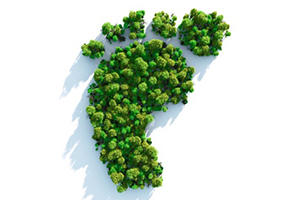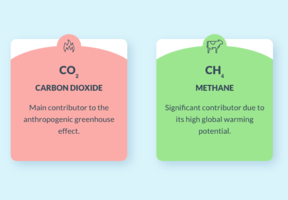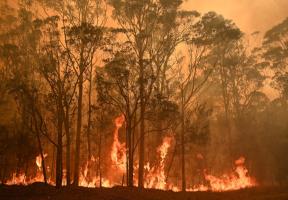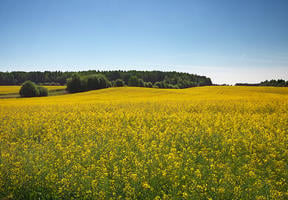The IPCC Report on the Ocean and the Cryosphere
Published on 02.25.202010 min read
About the report: 104 IPCC scientists from 36 countries reviewed 6,981 publications and studies. The drafts of the report received 30,000 comments from outside experts. The result was an 800-page assessment, with summaries for policymakers and journalists1 .
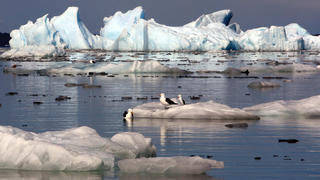
© Martin BERNETTI / AFP - The warming of the oceans threatens the living conditions of many populations and marine biodiversity. Here, the thaw of a glacier in the north of Patagonia (Chile)
Oceans and the Cryosphere
Oceans cover 70% of the Earth’s surface and the covers between 7% and 17%, depending on the season. The cryosphere, from the Greek word “kryos”, meaning cold, refers to the frozen parts of the planet, including glaciers, ice caps (the Arctic and Antarctic), icebergs, sea ice, permafrost (permanently frozen ground), frozen lakes and rivers, snow and seasonal ice cover. The total volume exceeds 1.5 billion cubic kilometers of water.
The Effects of Global Warming
The increase in the Earth’s average temperature has impacts on both the ocean and the cryosphere. As oceans warm, they become more acidic and damage in marine ecosystems. Glaciers and ice caps are melting, causing sea levels to rise. In addition, extreme coastal events are becoming more widespread and severe. However, if urgent action is taken to stem the growth of greenhouse gas emissions, it is still possible to limit the magnitude of these changes.
Melting Glaciers
If emissions continue to remain at a high level, small glaciers in Europe, East Africa, the Andes and Indonesia are likely to lose 80% of their current ice mass by 2100. This phenomenon would have consequences on a multitude of activities, from water supply and agriculture to hydropower and tourism.
Rising Sea Levels
The average global sea level is rising due to the expansion of warming sea water and the melting of glaciers and polar ice caps. After increasing about 15 cm in the 20th century, the sea level is currently rising at a rate of 3.6 mm/year, or more than twice as fast. Even if is kept well below 2°C, the rise could reach between 30 and 60 cm by 2100. Above 2°C, it could increase to between 60 and 110 cm.
A Threat to Islands and Low-Lying Environments
Extreme sea level events along the coast, during high tides or fierce storms, for example, will happen more frequently due to the average rise in sea levels. As a result, small island nations (65 million people) and heavily populated low-lying regions (680 million people), particularly in Asia, will be exposed to greater risks. Some island states may even become uninhabitable, but the IPCC has not offered any precise figures.
Oceans Absorb Heat and CO2
Oceans provide two major benefits:
- They soak up large quantities of . The report says that oceans have absorbed more than 90% of the excess heat generated by global warming.
- They act as carbon sinks, in the same way as plants and soil. Since the 1980s, the oceans have absorbed between 20% and 30% of man-made carbon emissions. Without these carbon sinks, global warming would have risen considerably more than 1°C – the temperature recorded to date – since pre-industrial times.
Ocean Acidification
These two benefits have their disadvantages, however: the absorbed heat causes the sea level to rise and oxygen levels to drop, and the capture of makes the water more acidic. Ocean acidification is extremely harmful to marine organisms, especially coral, plankton and shellfish. The impacts of acidification travel through the food chain, affecting the distribution of fish populations. Global warming is also prompting some fish species to move north in search of cooler water, thereby reducing the catch potential in developing countries. Establishing fishery management policies and protected areas are possible solutions mentioned in the report for minimizing risks.
Thawing Permafrost
Permafrost areas that are hundreds of years old are warming and thawing. Even if global warming is kept at less than 2°C, almost 25% of the near-surface (between 3 and 4 meters deep) permafrost will thaw by 2100. And if greenhouse gas emissions continue to grow rapidly, around 70% of near-surface permafrost will disappear. Permafrost in the northern hemisphere contains a vast quantity of carbon, almost twice the amount of carbon in the atmosphere. If it were to melt, it would significantly raise the amount of greenhouse gas emissions in the atmosphere, particularly methane. Expanding the plant coverage in areas where the permafrost has melted would not offset the thaw-induced emissions.
Sources:
- See the press release – https://www.ipcc.ch/site/assets/uploads/2019/09/srocc-P51-press-release.pdf

